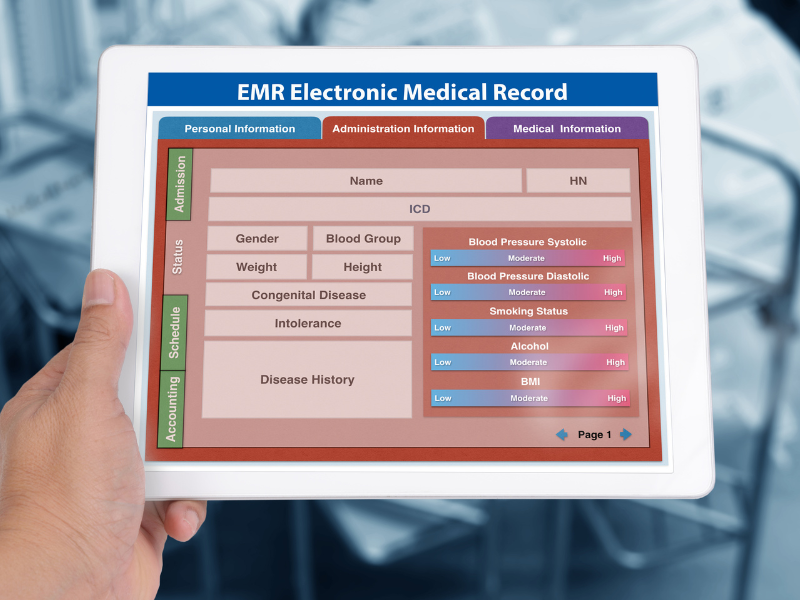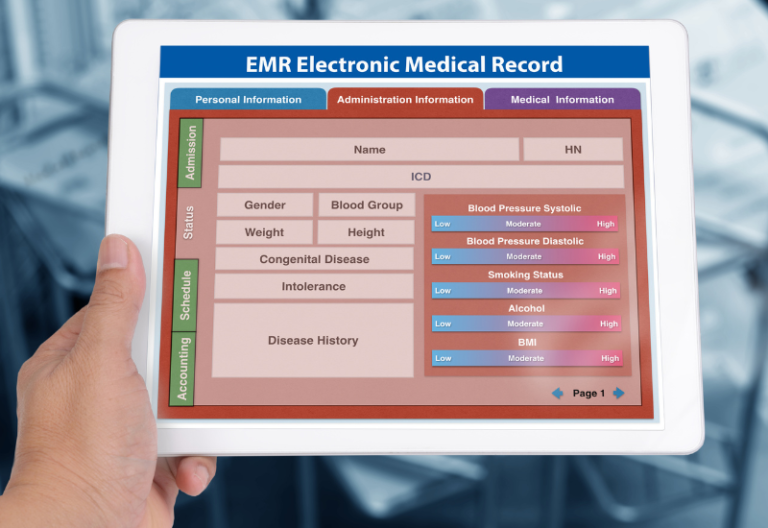Electronic medical records (EMR) are game changers when it comes to patient care and administrative management. They streamline workflows and foster collaboration by centralizing information. However, many providers still struggle with the lack of robust data transportation and interoperability among EMRs and other systems, causing inefficiencies in medical records management.
With EMR integration, healthcare providers can achieve better efficiency, higher accuracy, and seamless patient experiences.
Let’s dive into the benefits of EMR integration and how it helps streamline data flow in health information systems.
Table of Contents

What Is EMR Integration?
Electronic medical record integration happens when disparate healthcare information technology systems connect to share patient data. Its goal is to improve the quality and efficiency of patient care by giving access to patient records regardless of location.
Integration also allows the seamless exchange and utilization of patient data across different systems. Staff can say goodbye to manual data entries and eliminate inaccurate data inputs due to human errors.
The Importance of EMR Integration
Medical circles will always produce lots of patient data, which can be easily lost or mixed up when manually written. EMR integration facilitates interoperability, which enables seamless communication among healthcare stakeholders like hospitals, clinics, laboratories, and pharmacies. It creates a better flow of medical data among various digital health tools.
By connecting systems and consolidating information, healthcare providers can enhance clinical decision-making, streamline workflows, and improve patient outcomes.
Types of EMR Integration
EMR integrations can either be point-to-point integration, which directly connects two systems, or platform integration, which uses a middleware to connect multiple systems. Choosing either one will depend on your organization’s specific requirements.
EMR usually integrates with the following:
- Laboratory Information System (LIS): This eliminates the paper slip where doctors write the recommended tests a patient needs from a lab. By integrating into an LIS, patients can go directly to the lab with their doctor’s order and undergo all the tests uploaded in the system. The results are also in the system, which the doctor can readily see.
- Clinical Trial Management System (CTMS): With this integration, doctors can access the clinical trial enrollment of their patients, including the entire patient’s medical history. This prevents erroneous decisions from incomplete data.
- Medical Billing: By integrating into a medical billing system, healthcare providers can ensure a healthy revenue cycle. This includes an integrated billing software and insurance reimbursement facility.
- Medical Device Integration (MDI): Devices like monitors, finger cuffs, ventilators, and anesthesia carts produce lots of data that are critical to care providers. By integrating with these devices, healthcare providers can monitor the patient’s current situation involving their vital signs. It also automates the data transfer from the device to the EMR.
- Telehealth: EMR integrations allow practitioners to pass patient data forward or backward between systems used for virtual consultations.

There are also several options for EMR integration, such as:
- Cloud Healthcare: Data is accessible in the cloud. This integration is also affordable and usually offered as a SaaS or web-based cloud software.
- Mac EMR: This is used with an Apple device since the integration is designed specifically for Mac OS.
- ONC-Certified EMR: This integration follows the specific requirements of the Office of the National Coordinator for Health Information Technology. These rules address the proper handling and storage of sensitive patient data.
- Behavioral/Mental Health EMR: These are specific solutions for mental and behavioral health purposes that have unique features for the actual needs of mental health clinics and therapists.

Benefits of EMR Integration
Several benefits to EMR integration make it worthwhile despite its complexity. These are:
- Enhanced efficiency: EMR integration automates repetitive tasks, reduces manual data entry, and streamlines workflows, allowing healthcare providers to focus more on patient care. It helps providers access patient data anytime, anywhere, regardless of the available device.
- Improved accuracy: By eliminating the need for manual transcription and reducing the risk of errors, EMR integration enhances the accuracy and reliability of patient data, leading to better clinical decision-making and outcomes.
- Increased productivity: By streamlining data entry, healthcare providers and their staff can devote more time to providing better patient care. There will also be better care coordination among various departments.
- Interoperability: EMR integration promotes interoperability among disparate systems and healthcare stakeholders, enabling seamless communication, data exchange, and collaboration across the continuum of care.
- Cost savings: By reducing administrative overhead, minimizing redundant processes, and improving resource utilization, EMR integration helps healthcare organizations achieve cost savings and operational efficiencies.
- Greater innovation: EMR integration provides a central data repository and gateway that enables various innovations like the Internet of Medical Things.
- Enhanced patient engagement: EMR integration facilitates access to comprehensive patient information, enabling healthcare providers to deliver personalized care and engage patients in their treatment plans.
- Better patient satisfaction: Patients value a seamless experience brought about by connected systems from their online scheduling, bill payments, patient reminders, and more. Interconnected systems also decrease waiting times, a common pain point among providers and patients.
- Government incentives: EMR integration ensures compliance with regulatory requirements, such as HIPAA (Health Insurance Portability and Accountability Act), by safeguarding the confidentiality, integrity, and availability of patient data. Using interoperable EMRs also qualifies providers for various incentive programs promoting the practice.
Secure Fax Integration With EMR Systems Using iFax
Integrating fax functionalities in EMR and EHR systems streamlines the exchange of sensitive health data. From one system to another, iFax makes faxing across health information systems as seamless as possible. Best of all, you can save on costs by eliminating the need for fax machines.
Our EHR fax integration lets you fax directly from Epic, Cerner, and NextGen. Not only does it speed up the workflow, but it also allows for secure data transfers, minimizing disruptions and optimizing efficiency.







